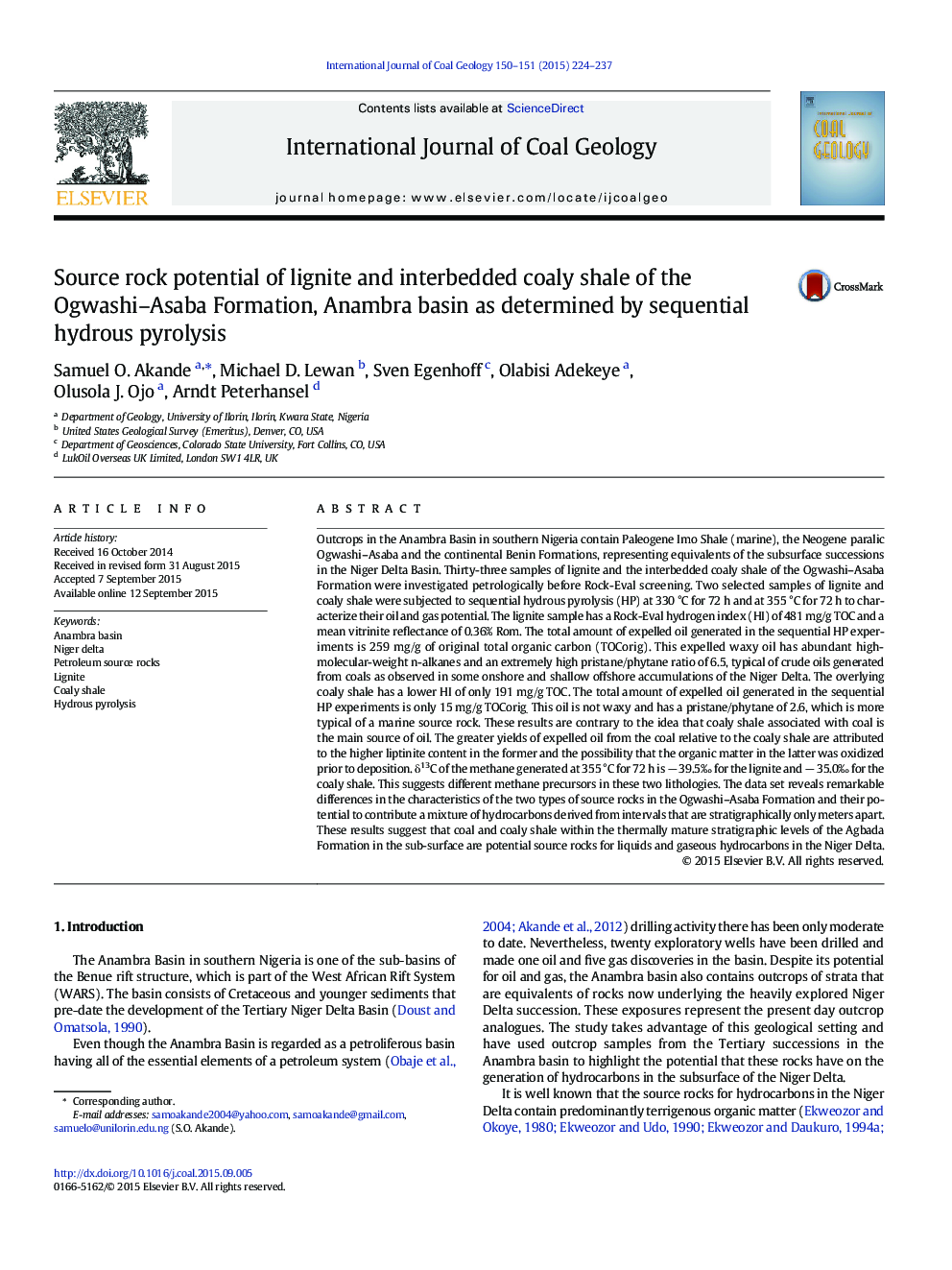| کد مقاله | کد نشریه | سال انتشار | مقاله انگلیسی | نسخه تمام متن |
|---|---|---|---|---|
| 1752778 | 1522551 | 2015 | 14 صفحه PDF | دانلود رایگان |

• Lignite and shale of the Agbada Formation, Tertiary Niger Delta were subjected to sequential hydrous pyrolysis.
• High pristane/phytane, waxy oil was expelled from the lignite.
• Low pristane/phytane oil of more marine nature was expelled from the overlying shale.
• Coal and shale in the Agbada Formation could source Niger Delta oils with terrigenous and marine nature.
• The oil expulsion efficiency of coals can be significantly greater than the associated coaly shales.
Outcrops in the Anambra Basin in southern Nigeria contain Paleogene Imo Shale (marine), the Neogene paralic Ogwashi–Asaba and the continental Benin Formations, representing equivalents of the subsurface successions in the Niger Delta Basin. Thirty-three samples of lignite and the interbedded coaly shale of the Ogwashi–Asaba Formation were investigated petrologically before Rock-Eval screening. Two selected samples of lignite and coaly shale were subjected to sequential hydrous pyrolysis (HP) at 330 °C for 72 h and at 355 °C for 72 h to characterize their oil and gas potential. The lignite sample has a Rock-Eval hydrogen index (HI) of 481 mg/g TOC and a mean vitrinite reflectance of 0.36% Rom. The total amount of expelled oil generated in the sequential HP experiments is 259 mg/g of original total organic carbon (TOCorig). This expelled waxy oil has abundant high-molecular-weight n-alkanes and an extremely high pristane/phytane ratio of 6.5, typical of crude oils generated from coals as observed in some onshore and shallow offshore accumulations of the Niger Delta. The overlying coaly shale has a lower HI of only 191 mg/g TOC. The total amount of expelled oil generated in the sequential HP experiments is only 15 mg/g TOCorig. This oil is not waxy and has a pristane/phytane of 2.6, which is more typical of a marine source rock. These results are contrary to the idea that coaly shale associated with coal is the main source of oil. The greater yields of expelled oil from the coal relative to the coaly shale are attributed to the higher liptinite content in the former and the possibility that the organic matter in the latter was oxidized prior to deposition. δ13C of the methane generated at 355 °C for 72 h is − 39.5‰ for the lignite and − 35.0‰ for the coaly shale. This suggests different methane precursors in these two lithologies. The data set reveals remarkable differences in the characteristics of the two types of source rocks in the Ogwashi–Asaba Formation and their potential to contribute a mixture of hydrocarbons derived from intervals that are stratigraphically only meters apart. These results suggest that coal and coaly shale within the thermally mature stratigraphic levels of the Agbada Formation in the sub-surface are potential source rocks for liquids and gaseous hydrocarbons in the Niger Delta.
Journal: International Journal of Coal Geology - Volumes 150–151, 1 October 2015, Pages 224–237